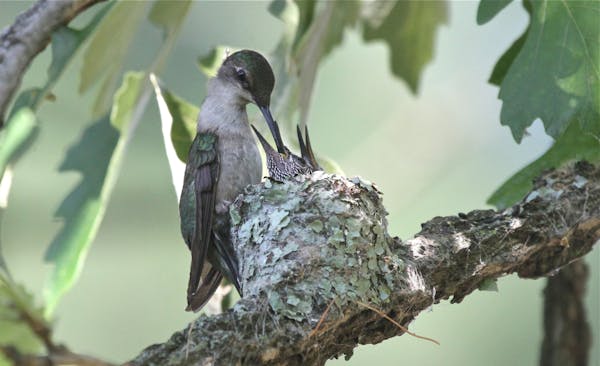More about hummingbirds
Habitat is key
What does good hummingbird habitat look like? It takes more than a nectar feeder or two to convince hummingbirds to include your back yard in their breeding or feeding territory. They look for trumpet-shaped flowers to provide nectar, and they need a variety of plants to ensure blooms from May through September. A ruby-throat may visit 2,000 flowers a day to lap up nectar.
Plants with small flowers attract the tiny insects that hummingbirds need for protein. A water source — especially a spray or fountain — is an added attraction, especially to help clean off sticky beaks. And they need plenty of shrubs and trees for hiding, nesting and perching to survey their realm.
Flowers can be choosy
More than 150 native plants rely on hummingbirds, and hummingbirds alone, for pollination services. The plants and birds have evolved together, with the plants providing a sweet treat in return for carrying their pollen farther than most insects would, and on days when cool temperatures might ground bees and other insects. So to keep that nectar reward out of the mouths of bugs, beetles and bees, "hummingbird flowers" feature long, downward-hanging blossoms, to match hummingbirds' long beaks. Cardinal flower is an example of a native hummingbird flower in our region.
You can help hummingbirds
The Audubon Society's Hummingbirds at Home citizen science project seeks to track the effects of climate change on hummingbird feeding patterns. Are flowers blooming earlier and causing a lack of synchronicity between birds and blooms? If you'd like to help, find out more at: http://birds.audubon.org/hummingbirds-home.

Minnesota Sports Hall of Fame: A class-by-class list of all members

This retired journalist changed professional wrestling from Mankato

